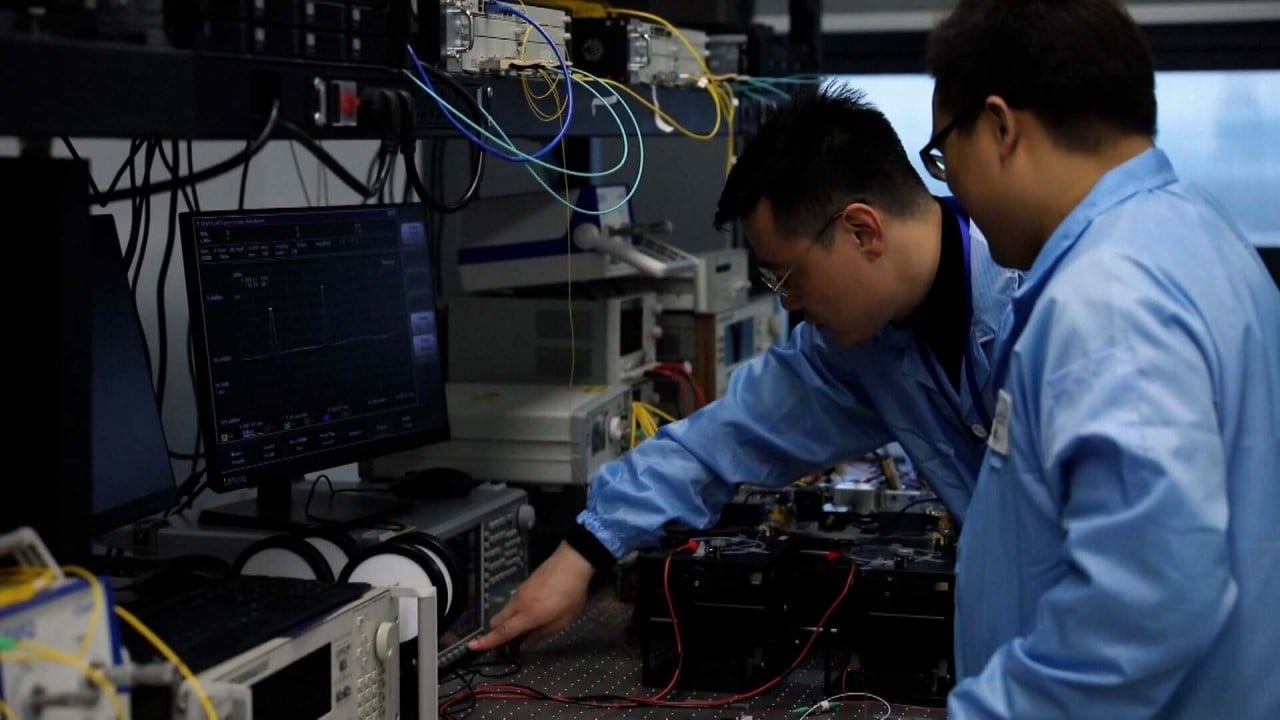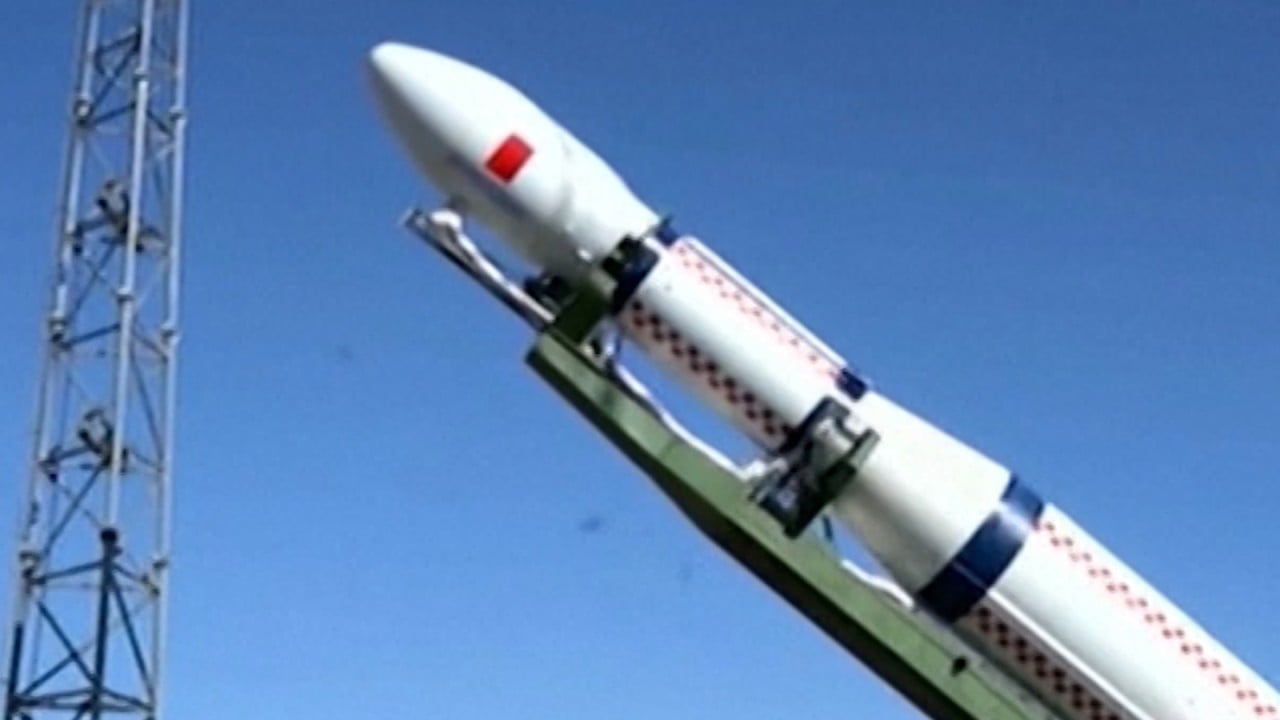
Chinese scientists develop 6G technology for hypersonic weapons communication and tracking: paper
- Tianjin team says it has solved some communication blackout problems that occur at five times the speed of sound
- They report their laser device can generate continuous electromagnetic waves in the terahertz band that is used for next-gen communications
The breakthrough has implications for the effectiveness of weapons and defence systems and could lead to “critical improvement in China’s near-space defence”, according to the team led by Professor Yao Jianquan, one of China’s top laser scientists.
Their paper on the experiment was published in the Journal of National University of Defence Technology on Tuesday.
What are hypersonic weapons, and why is there a race to develop them?
The research team in Tianjin said it had achieved a “complete penetration” of the signal-blocking plasma shield around a hypersonic weapon with electromagnetic waves.
A hypersonic weapon has difficulty maintaining communication with the world outside because hot, ionised gas appears on its surface and blocks electromagnetic waves. The problem – known as “black barrier” – also concerns defence applications because a ground-based radar cannot identify and lock on to a hypersonic target behind a plasma shelter.
Yao and his colleagues with the school of precision instruments and optoelectronics engineering at Tianjin University have developed a laser device that could generate a continuous beam of electromagnetic waves in the terahertz band, a frequency range between microwave and infrared that is also used for 6G next-generation communication technology.
Ground experiment results suggested these terahertz waves could effortlessly go in and out of the plasma produced by a hypersonic weapon at 10 times the speed of sound or even faster “as if the black barrier does not exist”, according to their paper.
Terahertz radiation can penetrate materials. Full-body scanners using the technology have been used in some airports to detect items hidden under fabric.
The communication industry believes a 6G smartphone will not only stream data at a speed hundreds of times faster than at present, but could also monitor vital life signs – such as gestures, breath and glucose levels – because of its unprecedented sensitivity to terahertz waves.
The technology has been studied intensively for applications in the military, such as radar for stealth aircraft detection or high-speed communication in space.
But using 6G on a hypersonic weapon is more challenging.
China’s secret wind tunnel ‘key to hypersonic missile programme’
Some previous studies found terahertz signals in the lower frequency range that were commonly used for communication could deteriorate while going through the plasma.
Higher frequency waves penetrate the barrier more efficiently but cannot travel far in the atmosphere.
A hypersonic weapon travelling at Mach 5 in the atmosphere can reach an effective communication range up to 60km (37 miles) with a 5-watt transceiver at a high frequency of 2 THz, according to researchers with the Northwestern Polytechnical University and Shanghai Aerospace Control Technology Institute.
This range “can ensure normal communication for flight control and detection through the black barrier”, they said in a paper published in the domestic peer-reviewed journal Flight Control and Detection in November.
The terahertz device built by Yao’s team worked at a slightly higher frequency of 2.5Thz. They did not estimate the range of their technology in an open environment.
The experiment suggested that terahertz waves had significant potential in military applications, according to a communication scientist with the Chinese Academy of Sciences in Beijing, who requested anonymity because of the sensitivity of the issue.
But if high-frequency waves were to be used on a radar for missile defence, the radar must be extremely powerful and its antenna very large to achieve longer range, the researcher said.
Starlink’s download speed is about 100 Mbps at present.
China launched the world’s first 6G satellite with terahertz technology in 2020 to conduct high-speed communication experiments in space.
On the ground, Chinese scientists have conducted 6G data transmission experiments and reached speeds at several hundred gigabytes per second.
Some industry experts believe the commercialisation of 6G will take a decade because of technical challenges.
Terahertz waves are more like a laser beam than radio waves and cannot spread out or move around an obstacle. A terahertz antenna must constantly aim at a base station on the ground or in space.
The frequency of errors in signal will rise with the distance required for communications or target detection.
To solve these problems, China is developing compact terahertz antennas with synthesised aperture radar technology – high-speed processors that could handle a huge data flow without overheating – and high-altitude base stations over the Tibetan plateau to integrate future 6G networks in space and on the ground, according to scientists involved in these projects.




